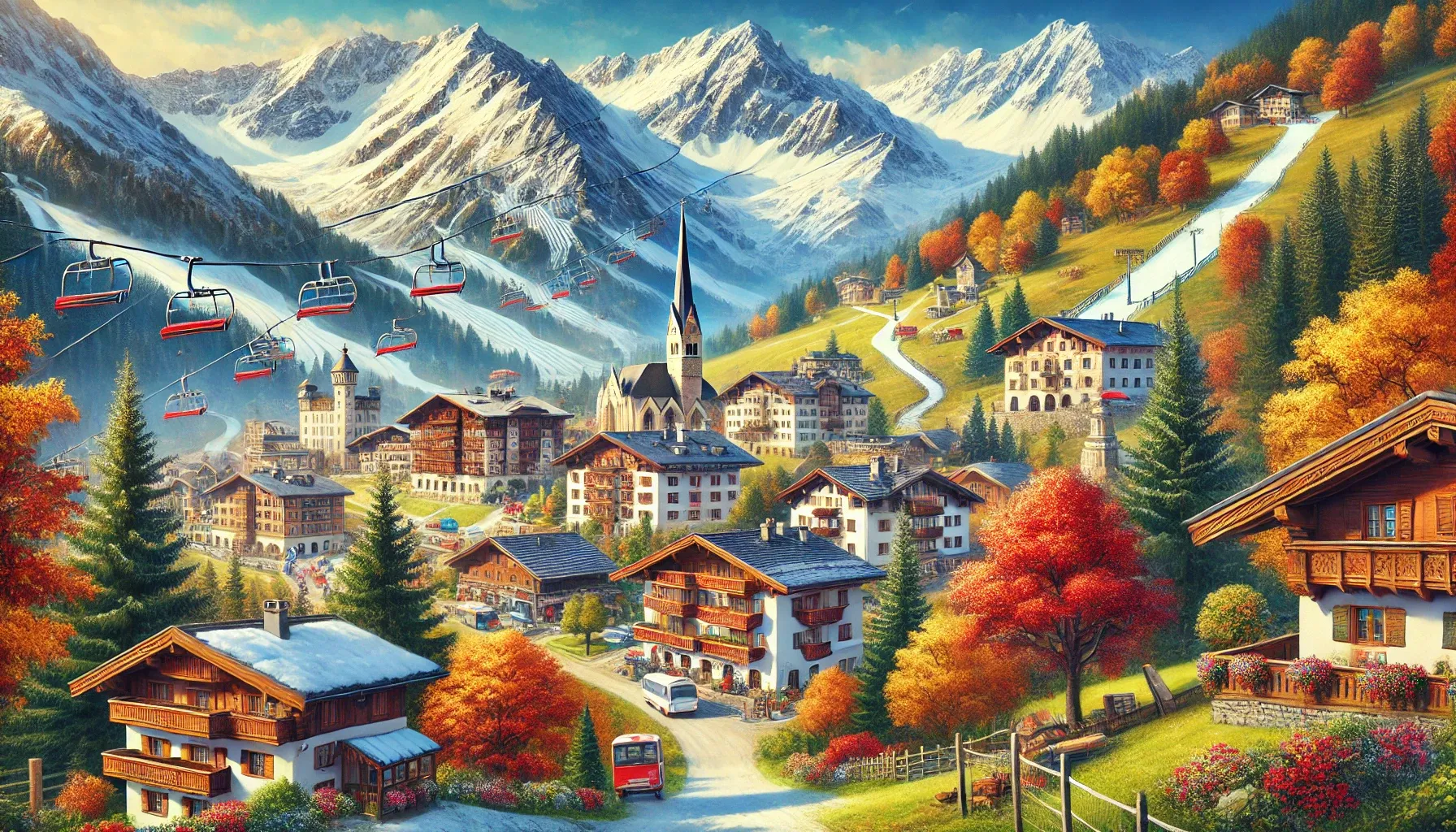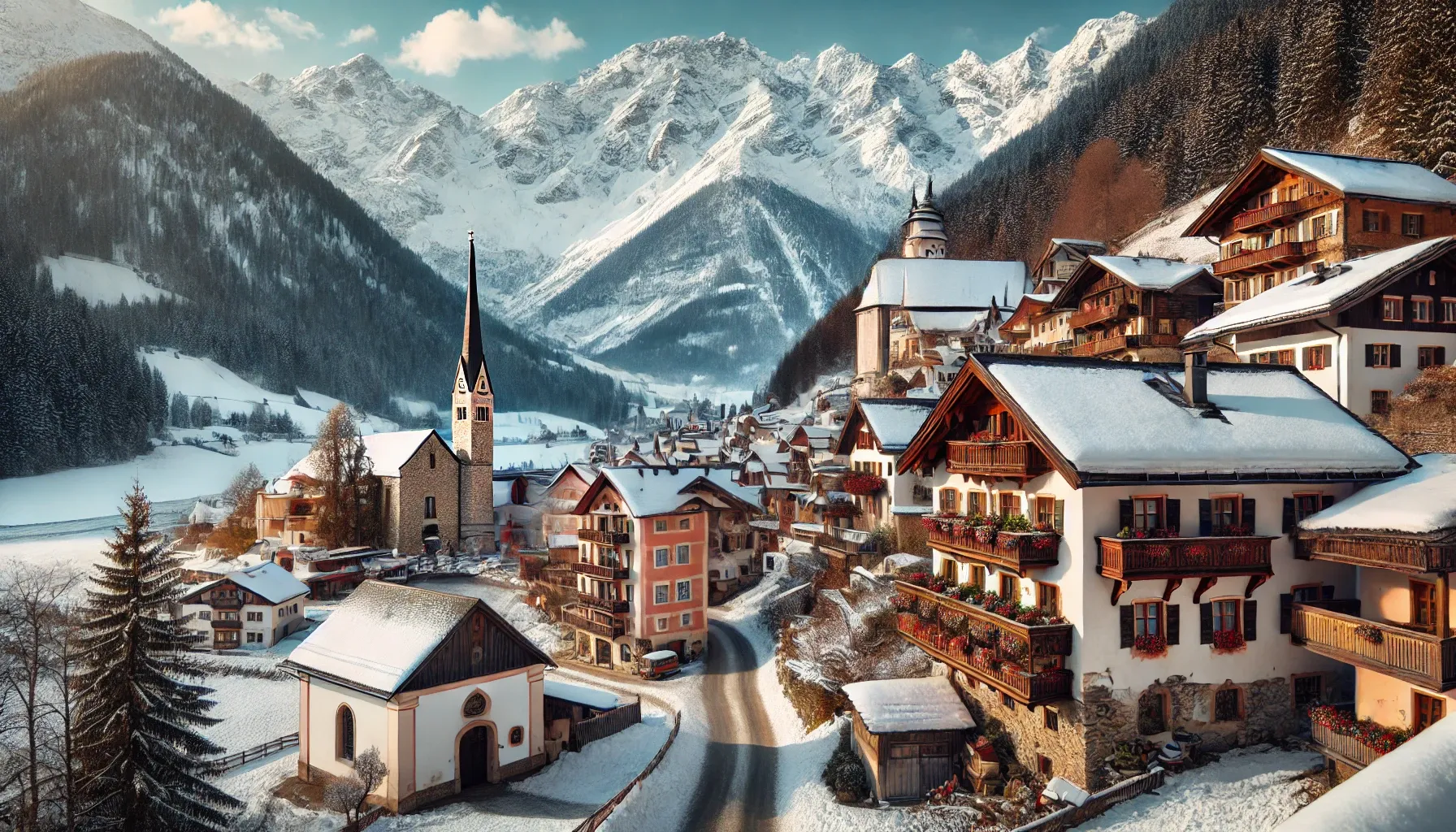Tyrol: The Heart of the Alps and the Cradle of Skiing

- Tyrol: The Pearl of the Alps and the birthplace of skiing?
- How did Tyrol become the center of history and culture in Austria?
- How to travel and invest in real estate in Tyrol effectively?
Tyrol: The Heart of the Alps
Tyrol, located in the west of Austria, is a real gem among the Alpine regions, called the "heart of the Alps". This picturesque region stretches 110 kilometers in a northerly direction and 210 kilometers from west to east. It borders several countries: Italy to the south, Switzerland to the west and Germany to the north. In addition, Tyrol is surrounded by a number of Austrian federal states, among which Carinthia, Salzburg and Vorarlberg stand out.
Innsbruck: The Olympic Capital
Innsbruck, the capital of this magnificent region, along with many other mountain towns, became known worldwide for hosting the Winter Olympic Games in 1964 and 1976. These significant events left behind not only memories but also modern infrastructure — specialized bobsled tracks in Ischgl, an innovative Olympic stadium, as well as ski jumps and Olympic ice lines on Patscherkofel and Seefeld.
The homeland of skiing.
Tyrol is rightly calledthe birthplace of alpine skiingIt was here, at the beginning of the 20th century, that skiing enthusiasts adapted traditional Scandinavian skiing techniques to conquer challenging alpine slopes. One of the key figures in this movement wasHans Schneiderwho became famous as an outstanding ski instructor. Today, the ski resorts of Tyrol offer unique conditions for active recreation for both experienced skiers and snowboarders, as well as for those who enjoy leisurely ski walks.
The natural beauty of Tyrol
The natural beauty of Tyrol impresses with its impressive aesthetics not only in winter, but also in summer, when tourists who prefer hiking and active trekking in scenic areas come here.
The climate of Tyrol
The climate of the region is determined by alpine conditions:
- Long winters with heavy snowfall.
- The average winter temperature ranges around minus 4 degrees Celsius.
- In summer, the temperature usually exceeds +20 degrees a little, although sharp fluctuations from heat to coolness and thunderstorms are possible.
- Autumn in Tyrol is characterized by mild and warm weather.
The mountains become especially picturesque when they are painted in bright autumn hues. The forests turn a rich red, while the valleys delight the eye with the yellow and orange colors of vineyards. Snow sometimes appears on the mountain peaks. This natural splendor is illuminated by a unique light that highlights the contrasts and makes the colors more vibrant. Autumn is the perfect time for mountain hikes, bike rides, or even paragliding.
Culture and history of Tyrol
In terms of culture and history, despite its belonging to the Republic of Austria, the local people - the Tyrolese - are much closer to the Bavarians than to the inhabitants of Vienna in their mentality and roots. These unique traits shape the character of Tyrol, making it a special place with arich cultural heritagewhere traditional ways of life and modernity, nature and active leisure intertwine closely.
The historical context of Tyrol
This whole story is not a coincidence, as if you study the past, you can notice that the Bavarians began to settle in Tyrol as far back as prehistoric times. In the 11th and 12th centuries, this region was part of the Roman Empire, and in 1363, control over it passed to the Habsburg dynasty.
During the Napoleonic Wars, in 1805, these territories became part of Bavaria. However, following the Congress of Vienna, held in 1814-1815, Tyrol was again part of Austria. In 1919, according to the Saint-Germain Peace Agreement, the region was divided into two parts:
- Northern regionlocated north of the Brenner Pass, returned to the Austrian Republic;
- Southern partwhere the main population was made up of Italians, was transferred to Italy.
Today, the federal state of Tyrol comprises eight districts: Landeck, Reutte, Imst, Innsbruck, Schwaz, Kufstein, Kitzbühel and East Tyrol, as well as Innsbruck itself, which is the administrative center of the region.
Cultural attractions of Innsbruck
Innsbruck is known for its numerous historical and cultural landmarks. Among them stands out the Imperial Palace of Hofburg, various cathedrals and churches, ancient castles, an arsenal, a triumphal arch, and a museum that houses an exceptional collection of Gothic paintings.
Don't forget about the Alpine Zoo, which offers stunning views and a local art museum for its visitors. Close to Innsbruck is the charming village of Wattens, home to the famous Swarovski Museum, located in underground caves.
Swarovski Museum
This amazing complex consists of seven halls connected by narrow corridors and staircases, where unique crystal crystals listed in the Guinness Book of Records are displayed.
9 October 2024
29 January
9 October 2024
29 September
- the famous "melting" clocks by the artist Salvador Dalí;
- the ceremonial adornments of an Indian Maharaja;
- mosaic path.
Particular attention is drawn to the hall, the walls and floors of which are completely decorated with crystal elements, as well as a wall 11 meters high, consisting of 12 tons of artificial crystals.
Ski resorts in Tyrol
Tyrol is also known for its ski resorts, among which Kitzbühel became famous because it was here that Franz Reisch first began to explore high-altitude ski trails in 1893. This resort is considered the foundation of Austrian skiing and remains one of the most popular ski destinations in the Alps to this day.
However, Tyrol is not limited to just Kitzbühel. Here you can find other towns that attract both experienced skiers and beginners, as well as lovers of stunning mountain landscapes. The list of the most famous resorts includes:
- Lech;
- St. Anton;
- Saint Christopher;
- Ischgl;
- Zeefeld;
- Mayrhofen.
Every year, tourists from all over the world come here because the winter weather is always snowy, the ski slopes are in perfect condition and the surrounding atmosphere creates a wonderful vacation environment. In addition, the incredible architecture and the diverse public, which includes many famous personalities, make this region even more attractive to visitors.

Efficient transportation communication
The transportation system of Tyrol is highly efficient, largely thanks to the international airport located in Innsbruck. This significantly simplifies the process of traveling to this beautiful region.
One of the convenient ways to get to Tyrol is by high-speed train, which departs from Vienna and takes approximately 4.5 hours. Another popular option is to arrive in Munich, after which travelers can take a train to Innsbruck, which takes about 1.5 hours, while by car, the journey can be completed in about an hour.
Real estate in Tyrol
As for real estate in Tyrol, there are some restrictions for foreigners to buy residential property. These measures are aimed at preventing the active purchase of land by locals, especially Bavarians. Therefore, the process of obtaining the necessary permits may be delayed, although the possibility of acquiring real estate for foreign buyers is still preserved.
The interest in Austrian real estate from foreigners is explained by the absence of an annual property tax, which can be quite high in most countries. In Tyrol, only a small land tax needs to be paid.
Housing prices and demand
Housing prices in the region are at a high level; however, compared to neighboring Switzerland, investments in local real estate can turn out to be quite profitable.
It is important to note that the demand for square meters in Tyrol increased significantly during the pandemic. At the beginning of 2020, the real estate market experienced difficulties, but by the end of the year there was a clear increase, which continued into 2021, when there was a noticeable rise in housing prices, especially in areas close to Innsbruck.
People have started to strive for more comfortable living conditions that combine:
- solitude
- access to necessary amenities
Commercial real estate
As for the commercial real estate sector in Tyrol, like in many other regions, office and retail properties have become less attractive due to the shift of many employees to remote work and the active development of delivery services. Nevertheless, approximately 80% of hotel owners in Tyrol report that their hotels' occupancy rates exceed pre-pandemic levels.
Investors are also showing interest in purchasing apartments in hotels, as such an investment allows for:
- use the room for your own recreation
- to receive rental income of 4-7% per year
Prices for apartments in Innsbruck
Prices for apartments in Innsbruck range from 4,000 to 9,000 euros per square meter, making the local real estate market more expensive than in Vienna. At the same time, those looking to purchase apartments in popular ski resorts in Tyrol, especially close to the lifts, may encounter prices reaching up to 8,000 euros per square meter, which is a significant figure for this region.
Conclusion
In conclusion, I would like to note that Tyrol, with its amazing history, stunning landscapes, and endless opportunities for recreation, is one of the best places for winter and summer tourism. This region not only attracts skiing enthusiasts from all over the world but also delights those who seek solitude and harmony with nature.Unique infrastructureThe infrastructure created as a result of the Winter Olympic Games has made Tyrol even more accessible and comfortable for tourists.
Cultural heritage
Traveling through Tyrol is not just an active holiday, but also an opportunity to connect withrich cultureandhistory of the regionStrolling through the picturesque streets of Innsbruck, visiting impressive museum exhibitions, and getting acquainted with local traditions provide unforgettable experiences and allow you to immerse yourself in the spirit of this unique place.
Natural beauties
Amazingly beautiful alpine landscapes, alluring ski slopes and cozy mountain villages create an atmosphere that every traveler is sure to remember.
Climate conditions
Moreover, the variety of climatic conditions makes Tyrol attractive year-round:
- Winter:deep snow and slope trails for skiers.
- Summer:A riot of colors and picturesque landscapes for hiking.
- Autumn:golden and scarlet shades that create a special magic.
- Spring:the freshness of nature and new colors.
Why you should visit Tyrol
Tyrol is not just a region of Austria; it is a whole story, culture, and ecosystem worth exploring and loving. So, if you are looking for a place for adventure, relaxation, and inspiration,Tyrol is waiting for you with open arms..
Tags
Comment
Popular Posts
9 October 2024
1485
9 October 2024
9935
29 September
359
Popular Offers

Subscribe to the newsletter from Hatamatata.com!
Subscribe to the newsletter from Hatamatata.com!
I agree to the processing of personal data and confidentiality rules of Hatamatata














